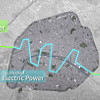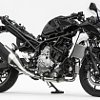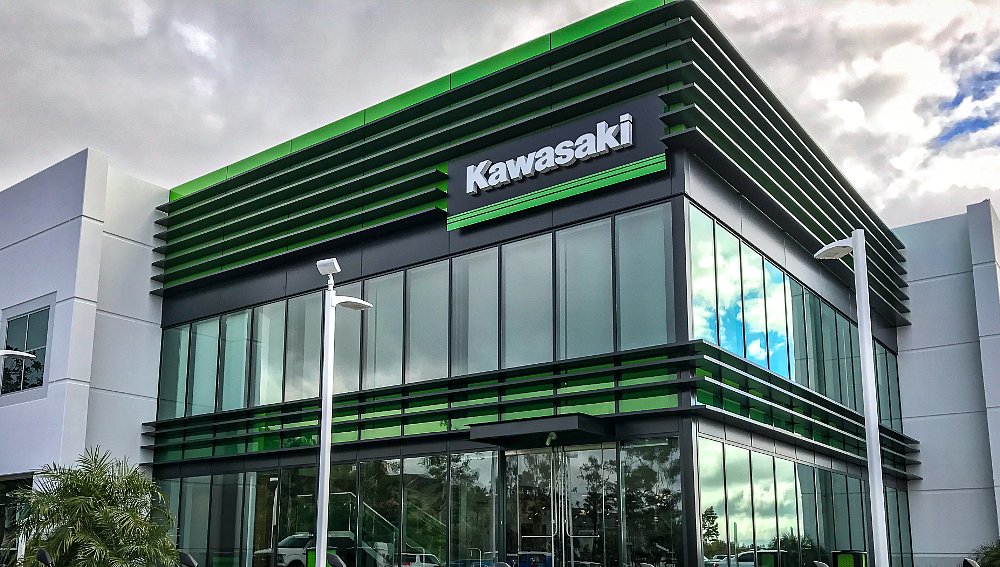After years of speculation, teasers, and concepts, Kawasaki allowed the public to see its electric naked and faired gas/electric hybrid motorcycle prototypes at the prestigious Coca-Cola Suzuka 8 Hours endurance race. Though the two models have nothing to do with the race itself, Kawasaki decided to use the opportunity to trot the new bikes around in front of fans and rival brands to show off its latest developments.
Team Green could be the first Japanese manufacturer to offer a full-sized electric motorcycle, and the first major manufacturer in the world to build a production hybrid motorcycle. That’s a big deal. Check out this video of the two bikes riding by the grandstands and cameras.
So what do we know?
Kawasaki started beating the EV drum in earnest in 2019. A flurry of patents and concepts followed. Then came a video of a Ninja 650-sized EV prototype producing a claimed (and underwheliming) 27 horsepower for its 500-pound heft. Last year's business plan raised the stakes with calls for intensive EV development and a fully electrified/hybridized lineup by 2035. An all-electric model was teased and released earlier this year, but it wasn't a full-sized motorcycle. Instead, Kawasaki dropped the Elektrode powered balance bike for kids. The latest news from Suzuka is the best indication so far that Kawasaki will finally make good on its electric promises.
The purely electric pre-production motorcycle draws heavily from the design language used on Kawi’s “Z” line of naked street bikes. The headlights and ergonomics are especially reminiscent of the Z400 and Z650, but the battery pack on this compact model looks too small to provide the equivalent of middleweight power. If the new EV is released as a production model, which recent U.S. emissions and VIN document filings suggest, it will probably be marketed as an urban runabout with around 15 horsepower. (That also happens to be around the horsepower limit for learner-tier motorcycle licenses in some markets.) The narrow tires, single brake, small-diameter front fork tubes, and overall stature point to a low-power, low-weight model. Of course, Kawasaki hasn’t released any specs for these models, or even photos from Suzuka.
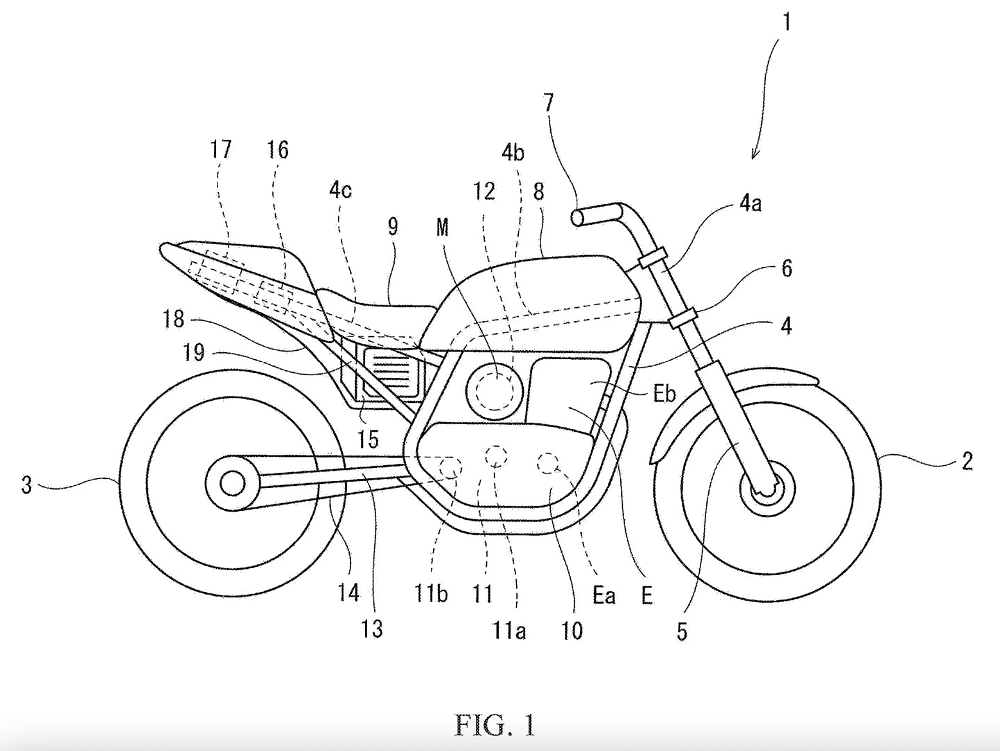
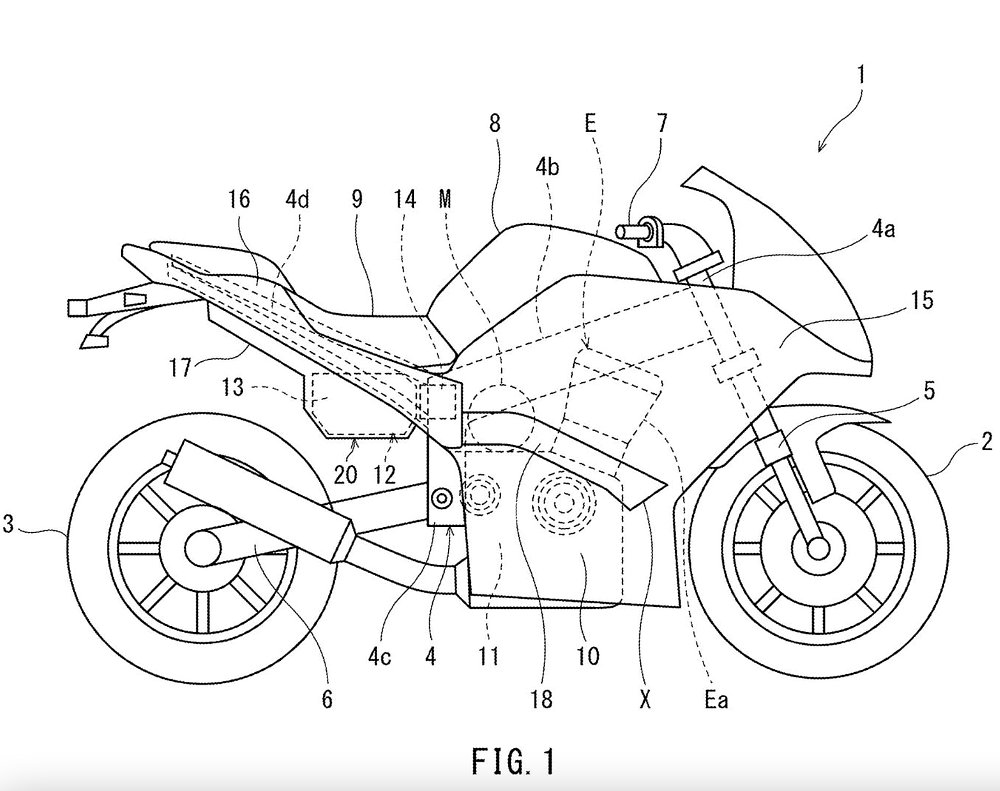
As for the “HEV” hybrid, Kawasaki’s flirted with the idea of hybrid motorcycles for some time, but this is the closest we’ve seen to a production version. Although this potential model wouldn’t be the first-ever hybrid motorcycle, it would represent the first full-size bike of its kind from a major OEM. Honda’s Japan-only PCX150 Hybrid and Piaggio’s MP300ie Hybrid blazed the trail, and now Kawasaki looks poised to deliver a gas/electric drivetrain in a motorcycle-shaped package. An official video from 2020 gives an overview of how the brand sees hybrid motorcycles functioning on the road.
Following conventional hybrid philosophy, the vehicles would rely on battery power around town. On the highway, the gasoline engine takes over, and when maximum performance is needed for spirited riding, both systems work together to lay down the power.
The Suzuka hybrid looks like it was derived from the Ninja 400, with two small headers exiting the front of the engine. Ninja-style bodywork is covered with air ducts to presumably cool the electric half of the drivetrain, which appears to sit somewhere above and behind the engine as shown in the patent images. Twin front discs foreshadow a heavier wet weight than the Ninja 400, which only has a single disc up front. Packaging has always been a major issue for hybrids, but Kawasaki is showing some confidence by displaying the HEV so publicly. Can the benefits of a hybrid system overcome the additional weight and design problems? And just how much fuel could a light, faired HEV like this save in the real world?
Notice that both motorcycles have chain final drives, right-side-up forks, and provisions for passengers. Looking closer, neither bike appears to have a clutch lever or any kind of shifter, so these may be twist-to-go like most other electric and hybrid two-wheelers. Other Kawasaki filings cover supercharged hybrid motorcycles and an "E-boost" button. Hmm...
Rumors and trademarks point to model names "Ninja E2" and "Ninja E2-R" with model codes "NX011AP" and "NR011AP" that could arrive as 2023 models. These names could refer to the electric Z, the hybrid, or maybe configurations that were not shown, like faired version of the naked model or a Z hybrid. Kawasaki is shaping up to be the manufacturer to watch during the fall launch season, which will be here in just a few months.





